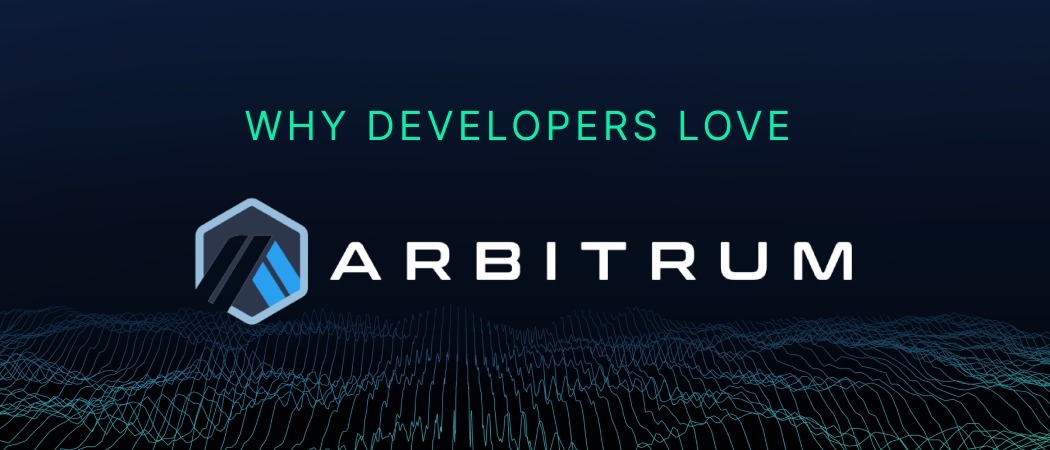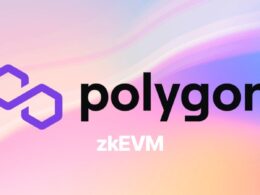Arbitrum – a suite of secure scaling solutions for Ethereum – has been developed by Offchain Labs, Inc. Headquartered out of the Greater New York Area, USA, Offchain Labs was founded in 2018 by Ed Felten, who served in the White House as President Obama’s Deputy CTO, and two other Princeton PhDs: Steven Goldfeder and Harry Kalodner.
As a solution, Arbitrum has achieved much traction since its inception. According to data updated till February 23rd, 2023, Arbitrum is responsible for a TVL (Total Value Locked) of US$3.38 billion, with a roll-up market share of 53% and aggregated user base of nearly 3 million. In terms of impact created, Arbitrum has saved ETH gas worth US$445 million.
While all the numbers mentioned above are indicative of Arbitrum’s popularity, here we try to discover the reasons behind its popularity.
Why Adopt Arbitrum?

Arbitrum is a Layer-2 Ethereum scaling solution that comes with a host of benefits. Layer-2 scaling solutions, as the name suggests, are networks or technologies that operate on top of an underlying blockchain protocol. Their aim is to improve the scalability and efficiency of the underlying protocol.
When Arbitrum works as a Layer 2 solution to Ethereum, it offers the same Trustless Security as Ethereum. With its security rooted in Ethereum, any one party can ensure correct Layer 2 results.
Arbitrum’s compatibility with Ethereum ensures it can run unmodified EVM contacts and unmodified Ethereum transactions. The EVM – standing for Ethereum Virtual Machine – is a software that helps execute the very crucial smart contracts – the backbone of the decentralised finance economy.
As a scalability solution to Ethereum, Arbitrum’s primary accomplishment is the ability to move contracts’ computation and storage off the main Ethereum chain. Taking off the load ensures much higher throughput.
All these benefits of Arbitrum come at a minimised per-transaction cost as its designing and engineering aim at minimising the L1 gas footprint of the system.
Altogether, Arbitrum brings with it the benefits and security standards of Ethereum while injecting more speed into it and minimising its cost. The introduction of Nitro has accentuated the benefits of Arbitrum.
Arbitrum Launching Nitro: Upgrades and Benefits
Arbitrum launched Nitro on August 31st. Nitro acted as a technical upgrade to Arbitrum and made it more EMV-compatible. Moreover, it helped lower the fees and accelerate the transactions, which resulted in a better user experience. Nitro can also do Arbitrum’s classic interactive fraud proofs through WebAssembly (WASM) code.
How Nitro Accomplishes its Objectives
Nitro’s advanced CallData Compression feature helps reduce transaction costs on Arbitrum by bringing down the amount of data posted to Layer-1. And since it acts through separate contexts for common execution and fault proving, it helps increase the performance of L1 nodes. The enhanced performance also results in lowered fees.
The Ethereum Layer-1 gas compatibility of Nitro ensures that pricing and accounting for EVM operations align with Ethereum. Additional Layer 1 interoperability of Nitro means more accurate synchronisation with Layer-1 block numbers and support for all Ethereum L1 pre-compiles. Nitro eliminates the failure mode where a retriable ticket fails to get created and comes with broader debugging support.
Nitro’s On-Ground Benefits
While Nitro’s technological upgrades and benefits are best-in-class, seeing how its benefits translate into the real development world would be more relevant now.
Nitro powers Arbitrum One and Nova. Arbitrum One is the ecosystem for all the dApps, wallets, and tools that have been developed using Arbitrum. The Arbitrum One Portal is essentially the gateway into the Arbitrum ecosystem. And developed products in this ecosystem include Bridges, Centralized Exchange, dApps, DAO and DAO tools, Stablecoins, Wallets, NFT Tools, and more.
Some of the most well-known centralized exchanges in the crypto world are built within the Arbitrum One ecosystem, including Binance, Coinbase, Crypto.com, KuCoin, OKx, and many more.
Arbitrum Nova offers the ecosystem for Web3, Social, and Gaming. It is home to Reddit’s community points and the next generation of gamers.
The Arbitrum Benefit for Developers

For developers, the work on Arbitrum is as convenient as developing on Ethereum, if not more. Being a layer-2 protocol, we have already seen that the benefits of Arbitrum are inclusive of Ethereum’s advantages, and it contains some more facilities.
To deploy contracts onto an Arbitrum chain, developers need to simply set the RPC endpoint, where an RPC node or Remote Procedure Call is a type of computer server that permits users to read data on the blockchain and send transactions to diverse networks.
Once the developer sets the RPC endpoint of their target Arbitrum chain, the system becomes ready to deploy with any of the developer’s chosen Ethereum development networks. The options include Truffle, Hardhat, Foundry, Brownie, and Alchemy.
Since Arbitrum Nitro chains are Ethereum-compatible, they allow the trustless deployment of Solidity contracts along with Vyper or any other language that compiles to EVM Bytecode.
Arbitrum blocks come with their block numbers. It starts at 0 at the Arbitrum genesis block and updates sequentially. The ArbOS and the Sequencer help delineate when one Arbittrum block ends, and the next one begins. Resultantly, the Arbitrum blocks get produced at a relatively steady rate.
It is easier for developers to build cross-chain applications with the Arbitrum protocol. These applications are capable of sending messages from Ethereum to an Arbitrum chain and vice versa. The Retryable Ticket and Precompile Contract toolings make messaging easier for Ethereum to Arbitrum and Arbitrum to Ethereum.
Since the Arbitrum protocol can be used conveniently to pass messages between Layer-1 and Layer-2, it is highly conducive to the trustless movement of assets from Ethereum to an Arbitrum chain and back. In principle, it is possible to bridge any asset/ asset type, including Ether, ERC20 tokens, ERC-721 tokens, etc.
Stylus: The Next-Gen Programming Environment Upgrade for Arbitrum One and Arbitrum Nova
On February 7th this year, OffChain Labs announced Stylus, the next-gen programming environment upgrade for Arbitrum One and Arbitrum Nova. The upgrade will help developers to deploy programs written in their chosen programming languages, such as Rust, C, and C++. These programs will run alongside EVM programs on Arbitrum.
Along with expanding how people can write decentralised programs, the advent of Stylus would make the process faster. Arbitrum authorities expect the Stylus upgrade to introduce a 10X boost in performance, similar to the Nitro upgrade. Stylus is also expected to benefit developers by bringing down fees and enabling a new phase of high-compute blockchain applications in diverse application areas.
The Stylus will allow users to create their Pre-compiles. This will prove especially beneficial to developers who are researching Ethereum. They would not have to set up their testnets. Instead, they can use Stylus and iterate on EIP precompiles.
The Future of Arbitrum

With the introduction of Nitro, Arbitrum validators could run Ethereum’s most popular extension client Geth. They could prove fraud in WebAssembly. Layer-2 could run at the original speeds. It only switched to slower WASM occasionally when it came to defeating would-be attackers. Nitro’s next-gen roll-up architecture resulted in seven times more throughput than Ethereum and lower fees without taking a toll on the security aspects.
The introduction of Stylus would help the protocol achieve more scale by proving fraud over untrusted WASMs. In the Stylus model, users will compile their programs into WASM and transform them on-chain into a format where execution is bounded, and safety is enforced.
The WASM sandboxing will allow running user programs at near-native speeds with the same security guarantees web browsers depend on to render web pages. Malicious programs will terminate in a way that can be proved on the chain without invoking the EVM ever. However, the EVM will be there and continue to act exactly as before. Stylus would only augment the EVM, and that’s why it will be called EVM+.
Altogether, Arbitrum – with upgrades like Nitro and Stylus – means a fast, easy-to-scale, high-throughput protocol or layer for Ethereum developers. The decentralised application and finance space has a lot to gain from Arbitrum without losing on the trustless security and other operational benefits of Ethereum.









